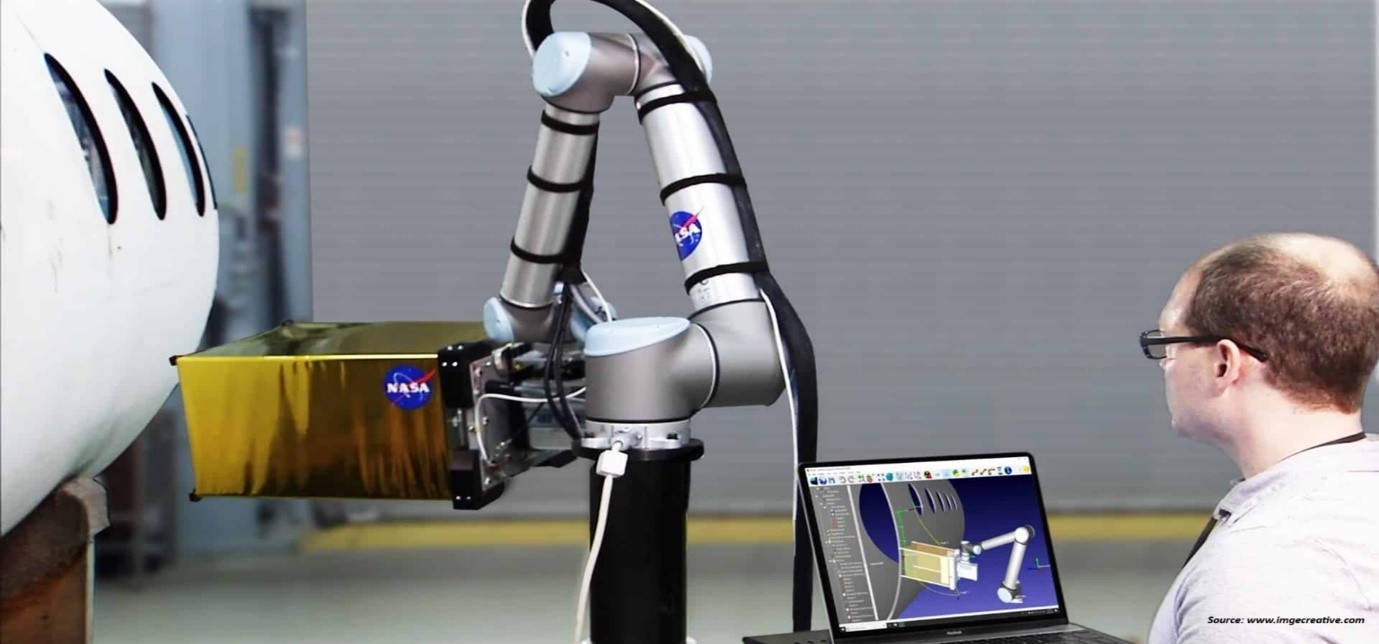
Network Attached Storage Market by Type (Consumer NAS, Enterprise NAS Solutions, Midmarket NAS Solutions), by Storage Solutions (Scale Up NAS, Scale Out NAS), by Storage Capacity (Below 1TB, 1TB – 5TB, Above 5TB), by Connectivity (Wired & Wireless), by Design (1–8 Bays, 8–12 Bays, 12–20 Bays and Others), by Deployment (On-Premises & Others) and by Industry Verticals (BFSI, IT and Telecom and Others) – Global Opportunity Analysis and Industry Forecast, 2025–2030
US Tariff Impact on Network Attached Storage Market
Trump Tariffs Are Reshaping Global Business
Network Attached Storage Market Overview
The Global Network Attached Storage Market size was valued at USD 34.89 billion in 2024 and is predicted to reach USD 40.36 billion by the end of 2025. The industry is predicted to reach USD 83.65 billion by 2030 with a CAGR of 20.0% from 2025-2030.
Network attached storage (NAS) has emerged as a critical solution for managing the growing volume of unstructured data across industries such as media, healthcare, and education. With its file-based architecture, centralized management, and scalability, NAS provides a reliable, secure, and accessible storage platform that supports real-time data sharing and collaboration. As businesses increasingly operate across multiple locations and rely on remote work models, NAS ensures seamless data access and management, streamlining workflows and enhancing operational efficiency. The proliferation of IoT devices and smart appliances further boosts the demand for NAS, as it offers high-speed connectivity and efficient data handling capabilities for connected environments. However, challenges like high initial costs and deployment complexity persist, particularly for small businesses. Despite these challenges, the integration of AI in NAS creates ample opportunities for the market growth.
Explosive Growth in Unstructured Data Drives Network Attached Storage Industry Growth
The exponential growth of unstructured data, including high-resolution videos, digital images, IoT sensor logs, and customer engagement records, is placing significant demands on enterprise storage systems. Network attached storage (NAS) is becoming a preferred solution due to its file-based architecture, centralized management, and scalable structure that allows organizations to expand storage capacity without disrupting operations. Industries such as media and entertainment, healthcare, and education are increasingly turning to NAS, as they generate large volumes of unstructured content that require efficient, secure, and accessible storage. In media production, NAS supports collaborative editing and real-time data sharing in healthcare, it stores critical medical imaging files and patient records.
Remote Accessibility and Centralized Storage Fuels the Network Attached Storage Market Growth
Modern enterprises increasingly operate across multiple locations and rely on a mobile, distributed workforce, making seamless and secure access to data a critical requirement. Network attached storage (NAS) systems address this need by providing centralized data management with robust remote connectivity features. Businesses enable employees to access, share, and collaborate on files in real time, regardless of their physical location, which significantly enhances operational efficiency. NAS solutions support secure remote login, multi-user file access, and integrated collaboration tools, making them ideal for organizations adopting hybrid or fully remote work models. This level of accessibility not only streamlines workflows but also reduces dependence on fragmented storage systems, ensuring that data remains secure, synchronized, and readily available across departments and geographies.
Proliferation of Smart Devices and Digital Workflows Drives the Market Growth
The rise of IoT devices, advanced surveillance systems, and smart appliances is driving the need for reliable, always-available storage. Network attached storage (NAS) systems, with their high-speed Ethernet, support for advanced file protocols, and virtualization capabilities, are perfectly suited to handle the continuous data flow from these connected environments. NAS solutions ensure seamless data storage, retrieval, and analysis, making them crucial for modern infrastructures like smart cities, industrial automation, and connected homes, enhancing operational efficiency and reliability.
High Initial Cost and Deployment Complexity Hinders the Network Attached Storage Market Growth
Despite their advantages, enterprise-grade NAS solutions require a significant upfront investment in hardware, setup, and integration. Small and medium businesses struggle to justify these costs, especially when budgets are constrained. Furthermore, installation and maintenance require technical expertise, which adds to operational expenses.
Integration of AI in NAS Creates Opportunity for Market Growth
The integration of artificial intelligence (AI) into network attached storage (NAS) systems is unlocking significant growth opportunities in the NAS market, projected to reach USD 96.1 billion by 2032 at a CAGR of 13.7%. AI enhances NAS functionality by enabling intelligent data management, predictive analytics, and automation, addressing the rising demand for efficient, scalable, and secure storage solutions in residential, commercial, and industrial sectors.
For instance, at CES 2025, UGREEN introduced the NASync iDX6011 and iDX6011 Pro, marking the debut of the industry’s first AI-powered NAS solutions integrated with Large Language Models (LLMs). Equipped with the Intel Core Ultra 5 Processor 125H, these advanced systems are engineered to deliver high-performance computing and intelligent data management capabilities, such as AI-driven photo categorization, semantic search, and natural language file interaction. These innovations streamline workflows, boost productivity, and cater to diverse use cases, from home media management to enterprise data processing. By embedding AI, NAS providers differentiate their offerings, attract a broader customer base, and capitalize on the growing need for smart storage solutions, driving market expansion through enhanced user experiences and operational efficiencies.
Market Segmentations and Scope of the Study
The network attached storage (NAS) market report is segmented on the basis of type, storage solutions, storage capacity, connectivity, design, deployment, industry vertical, and region. On the basis of type, the market is categorized into consumer NAS, enterprise NAS solutions, and midmarket NAS solutions. Based on storage solutions, it is divided into scale up NAS and scale out NAS. On the basis of storage capacity, the market is classified into below 1TB, 1TB–5TB, and above 5TB. By connectivity, the market is bifurcated into wired and wireless. In terms of design, it is segmented into 1–8 bays, 8–12 bays, 12–20 bays, and more than 20 bays. Based on deployment, the market is divided into on-premises, cloud, and hybrid. By industry vertical, the market is segmented into banking, financial services, and insurance (BFSI), IT and telecom, healthcare, retail, media and entertainment, and others. Regional breakdown and analysis of each of the aforesaid segments include regions comprising North America, Europe, Asia-Pacific, and RoW.
Geographical Analysis
North America continues to dominate the network attached storage (NAS) market, driven by the region's robust IT infrastructure, increasing demand for data management solutions, and rapid adoption of digital transformation initiatives across industries. The U.S., in particular, holds a significant market share due to the presence of major technology companies, cloud service providers, and high-demand sectors such as media, entertainment, healthcare, and government. The growing need for efficient data storage solutions, coupled with the rising volume of unstructured data, has fueled the demand for NAS in North America. Additionally, key players in the region are leveraging advanced technologies such as AI, cloud integration, and edge computing to enhance the performance and scalability of NAS systems, further positioning North America as a leader in the global NAS market.
Europe represents a rapidly growing market for network attached storage, with increasing investments in data security and regulatory compliance playing a pivotal role in driving demand. Countries like Germany, the UK, and France are experiencing significant adoption of NAS solutions due to stringent data privacy regulations like the GDPR, which require businesses to secure and manage large amounts of sensitive data efficiently. The demand for secure, scalable storage solutions is further amplified by the rise in data-intensive industries such as automotive, manufacturing, and finance. European businesses are increasingly opting for NAS systems that offer robust security features, centralized management, and cloud integration to comply with legal requirements while maintaining data integrity and accessibility.
The Asia-Pacific region is witnessing explosive growth in the network attached storage market, largely driven by rapid digital transformation initiatives, the proliferation of IoT devices, and increased demand for data storage solutions in sectors like manufacturing, retail, and healthcare. Countries such as China, India, and Japan are leading this growth, as enterprises adopt NAS systems to manage the ever-growing volume of unstructured data generated by IoT devices, surveillance systems, and digital enterprises. The rise of smart cities and industrial automation further contributes to the increased demand for high-performance NAS solutions. With a strong focus on cost-effective and scalable storage systems, Asia-Pacific offers substantial growth potential for NAS vendors, particularly those that can provide localized solutions tailored to the region’s diverse business needs.
The Rest of the World, including Latin America, the Middle East, and Africa, presents a rapidly emerging market for network attached storage solutions. As these regions undergo digital transformation, businesses are increasingly turning to NAS for cost-effective, scalable, and reliable data storage solutions. In Latin America, the growing adoption of cloud services and e-commerce platforms is driving demand for NAS systems that provide seamless storage and access across multiple devices and locations. Similarly, in the Middle East and Africa, rapid urbanization and the expansion of smart city initiatives are propelling the need for robust and efficient data management systems. With an expanding middle class, increased internet penetration, and a rising focus on local data storage, NAS vendors have significant opportunities to establish a strong market presence and tap into the growing demand for secure, high-performance storage solutions in these regions.
Strategic Initiatives and Market Positioning by Key Players
Key players in the global network attached storage (NAS) industry are adopting a variety of strategic approaches to maintain their market leadership and capture growth opportunities. Leading companies like Synology, QNAP, and Western Digital are focusing on product innovation, offering scalable NAS solutions with advanced features such as AI integration, enhanced security, and cloud compatibility. These developments are aimed at addressing the increasing demand for intelligent, secure, and high-performance data storage solutions across diverse industries like media, healthcare, and manufacturing.
For instance, Synology’s recent launch of NAS devices with integrated AI capabilities exemplifies the shift towards more intelligent storage solutions that cater to the growing needs of IoT, video surveillance, and data analytics.
However, key challenges persist, including competition from cloud storage providers, high initial costs for enterprise-level systems, and the complexities of integrating NAS with existing IT infrastructures. Despite these hurdles, there are significant opportunities ahead. As businesses continue to embrace hybrid work models and as data generation accelerates, there is a growing need for on-premise storage that provides both security and ease of access. This trend, combined with the rising adoption of IoT devices, presents a substantial growth potential for NAS vendors.
Furthermore, emerging markets in regions like Asia-Pacific and Latin America are becoming key areas of focus, as companies seek cost-effective and scalable solutions tailored to their evolving data storage needs. The NAS market’s expansion hinges on the ability of vendors to balance innovation with affordability, positioning themselves to serve both large enterprises and small to medium-sized businesses with increasingly sophisticated storage demands.
KEY BENEFITS
-
The report provides quantitative analysis and estimations of the network attached storage market from 2025 to 2030, which assists in identifying the prevailing market opportunities.
-
The study comprises a deep dive analysis of the network attached storage market including the current and future trends to depict prevalent investment pockets in the market.
-
Information related to key drivers, restraints, and opportunities and their impact on the network attached storage market is provided in the report.
-
Competitive analysis of the players, along with their market share is provided in the report.
-
SWOT analysis and Porters Five Forces model is elaborated in the study.
-
Value chain analysis in the market study provides a clear picture of roles of stakeholders.
Network Attached Storage Market Key Segments
By Type
-
Consumer NAS
-
Enterprise NAS Solutions
-
Midmarket NAS Solutions
-
By Storage Solutions
-
Scale Up NAS
-
Scale Out NAS
By Storage Capacity
-
Below 1TB
-
1TB - 5TB
-
Above 5TB
By Connectivity
-
Wired
-
Wireless
By Design
-
1–8 Bays
-
8–12 Bays
-
12–20 Bays
-
More than 20 Bays
By Deployment
-
On-Premises
-
Cloud
-
Hybrid
By Industry Verticals
-
Banking, Financial Services, and Insurance (BFSI)
-
IT and Telecom
-
Healthcare
-
Retail
-
Media and Entertainment
-
Others
By Region
-
North America
-
The U.S.
-
Canada
-
Mexico
-
-
Europe
-
The UK
-
Germany
-
France
-
Italy
-
Spain
-
Denmark
-
Netherlands
-
Finland
-
Sweden
-
Norway
-
Russia
-
Rest of Europe
-
Asia Pacific
-
China
-
Japan
-
India
-
South Korea
-
Australia
-
Indonesia
-
Singapore
-
Taiwan
-
Thailand
-
Rest of Asia Pacific
-
-
RoW
-
Latin America
-
Middle East
-
Africa
-
Key Players
-
Dell Technologies Inc.
-
International Business Machines (IBM) Corporation
-
Synology Inc.
-
NetApp, Inc.
-
Huawei Technologies Co., Ltd.
-
QNAP Systems, Inc.
-
ASUSTOR Inc.
-
Microsoft Corporation
-
Buffalo Americas Inc.
-
UGREEN Limited
-
Western Digital Corporation
-
Hitachi Vantara LLC
-
Netgear Inc.
-
Seagate Technology PLC
-
Hewlett Packard Enterprise Development LP
REPORT SCOPE AND SEGMENTATION
|
Parameters |
Details |
|
Market Size in 2024 |
USD 34.89 Billion |
|
Revenue Forecast in 2030 |
USD 83.65 Billion |
|
Growth Rate |
CAGR of 20.0% from 2025 to 2030 |
|
Analysis Period |
2024–2030 |
|
Base Year Considered |
2024 |
|
Forecast Period |
2025–2030 |
|
Market Size Estimation |
Billion (USD) |
|
Growth Factors |
|
|
Countries Covered |
28 |
|
Companies Profiled |
15 |
|
Market Share |
Available for 10 companies |
|
Customization Scope |
Free customization (equivalent up to 80 working hours of analysts) after purchase. Addition or alteration to country, regional, and segment scope. |
|
Pricing and Purchase Options |
Avail customized purchase options to meet your exact research needs. |

















 Speak to Our Analyst
Speak to Our Analyst





















